Commercial US Cargo Ship Reaches ISS
An Orbital Sciences Corp cargo ship reached the International Space Station on Wednesday with a delivery of food, supplies, science experiments and a fleet of tiny Earth-imaging satellites that will be launched from the orbital outpost.
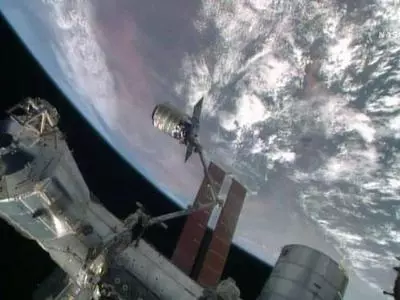
An Orbital Sciences Corp cargo ship reached the International Space Station on Wednesday with a delivery of food, supplies, science experiments and a fleet of tiny Earth-imaging satellites that will be launched from the orbital outpost.
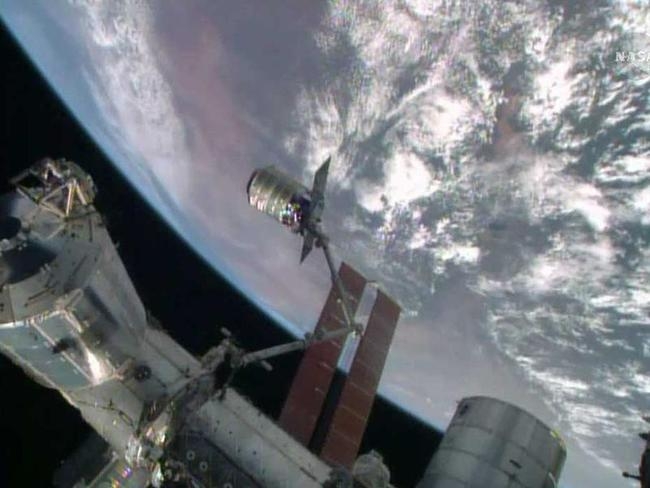
An Orbital Sciences Corp cargo ship reached the International Space Station on Wednesday with a delivery of food, supplies, science experiments and a fleet of tiny Earth-imaging satellites that will be launched from the orbital outpost.
Working from a control panel inside the station¡¯s Cupola module, commander Steven Swanson delicately steered the station¡¯s 58-foot long (18 m) robotic arm to pluck the Cygnus capsule from orbit at 6:36 a.m. EDT (1036 GMT) as the ships sailed 260 miles (418 km) above northern Libya.
"I think everyone is breathing again," NASA robotics officer Melanie Miller radioed to the crew from Mission Control in Houston. Text: Reuters
?
In Pic: The International Space Station's robotic arm, Canadarm2, grapples the Orbital Sciences' Cygnus cargo craft, as seen in this still image taken from NASA TV July 16, 2014. The Orbital Sciences Corp cargo ship reached the International Space Station on Wednesday with a delivery of food, supplies, science experiments and a fleet of tiny Earth-imaging satellites that will be launched from the orbital outpost.?
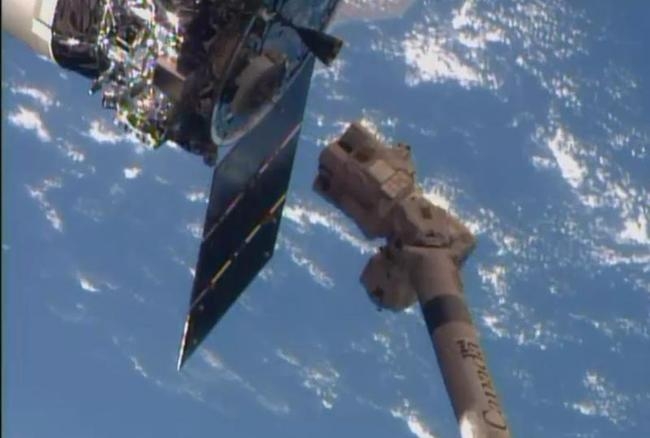
The capsule, named SS Janice Voss in tribute to a five-time space shuttle astronaut who died of breast cancer in 2012, blasted off aboard an Orbital Sciences Antares rocket from Virginia on Sunday.
"We now have a seventh crew member," Swanson radioed to Mission Control. "Welcome aboard the ISS, Janice."
A few hours later, the capsule was bolted to a docking port on the station¡¯s Harmony module so Swanson and his five crewmates can begin unpacking more than 3,600 pounds (1,630 kg) of food, equipment and supplies.
?
In Pic: In this image from NASA-TV shows the Cygnus cargo spacecraft just prior to being grappled by the International Space Station's Canadarm Wednesday July 16, 2014 as the pair flew over Northern Libya.
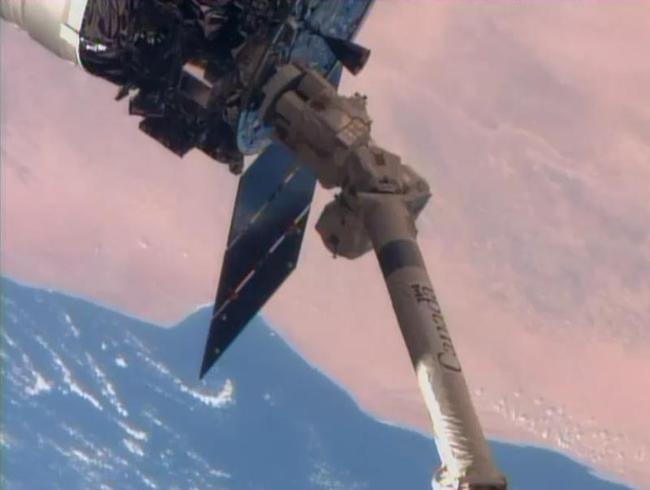
The cargo includes 28 shoebox-sized satellites for privately owned Planet Labs, which operates a constellation of Earth-imaging satellites. The satellites will be deployed this summer from a small satellite launcher set up in Japan¡¯s Kibo module.
"Our goal is to image the whole Earth every day ... and then put it online for people to get access to it," Robbie Schlinger, co-founder of the San Francisco-based company, told reporters during a prelaunch news conference.
?
In Pic: In this image from NASA-TV shows the Cygnus cargo spacecraft as it is grappled by the International Space Station's Canadarm Wednesday July 16, 2014 as the pair flew over Northern Libya. The Cygnus spacecraft is filled with over 3,000 pounds of supplies for the International Space Station in the company's second contracted cargo delivery flight to the space station for NASA.
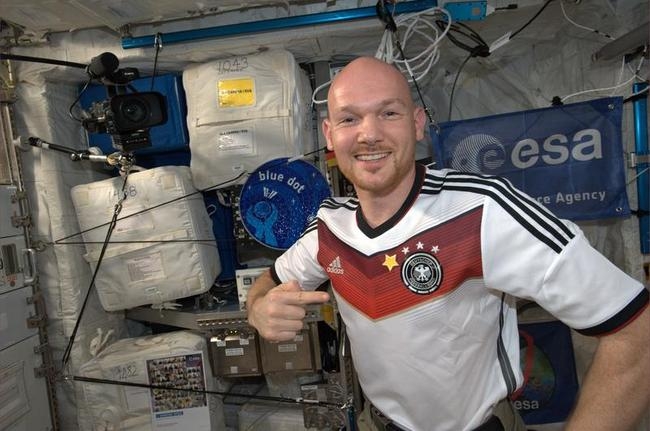
To that end, Planet Labs, which already has flown 42 ultra-compact satellites, intends to operate a network of 100 spacecraft, which would allow it to collect images of the entire Earth every 24 hours.
"It¡¯s really about getting rich data, to make it actionable and accessible to people," Schlinger said.
Cygnus is to remain berthed at the station, a $100 billion research laboratory owned by 15 nations, until mid-August. Once it is unpacked, the capsule will be refilled with trash and other items no longer needed on the station and released to fly back into the atmosphere for incineration.
?
In Pic: The photo provided by the European Space Agency ESA shows German astronaut Alexander Gerst on the international space station ISS who put a fourth star on his German soccer shirt after Germany won it's fourth World Cup after beating Argentina 1-0 after extra time.
